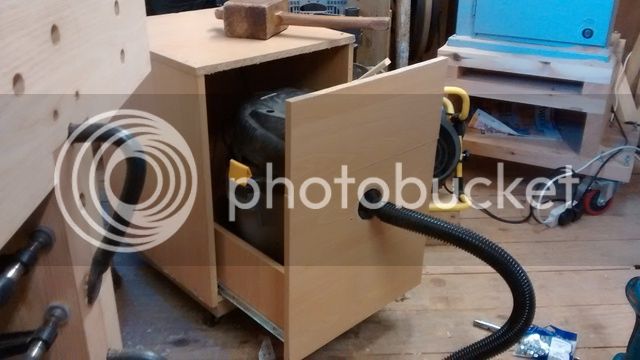So I finally got on with it and have built myself a enclosure for my very noisy vacuum. I took a old filing cabinet my neighbour was chucking out and reduced it in size but kept the drawer as a way of accessing the hoover to save me having to mount hinges etc onto chipboard.
Here's a photo of it mid build. I then added a sort of seal around the drawer edge where it met the cabinet and the hole for the hose to make it more airtight. I put it on wheels as well so it wouldn't vibrate as much.

The noise has been greatly reduced but upon using it for about half an hour I found that the sides of the cabinet where getting a little warm. I was hoping to put a layer of insulation on the outside of the cabinet (I haven't added at all yet) to reduce the noise down further but wonder if this is such a good idea now as it seems to be getting quite warm inside as it is.
I was wondering if over members who had done this had the same issues or had found a way of minimizing the heat building up inside.
Here's a photo of it mid build. I then added a sort of seal around the drawer edge where it met the cabinet and the hole for the hose to make it more airtight. I put it on wheels as well so it wouldn't vibrate as much.

The noise has been greatly reduced but upon using it for about half an hour I found that the sides of the cabinet where getting a little warm. I was hoping to put a layer of insulation on the outside of the cabinet (I haven't added at all yet) to reduce the noise down further but wonder if this is such a good idea now as it seems to be getting quite warm inside as it is.
I was wondering if over members who had done this had the same issues or had found a way of minimizing the heat building up inside.

































